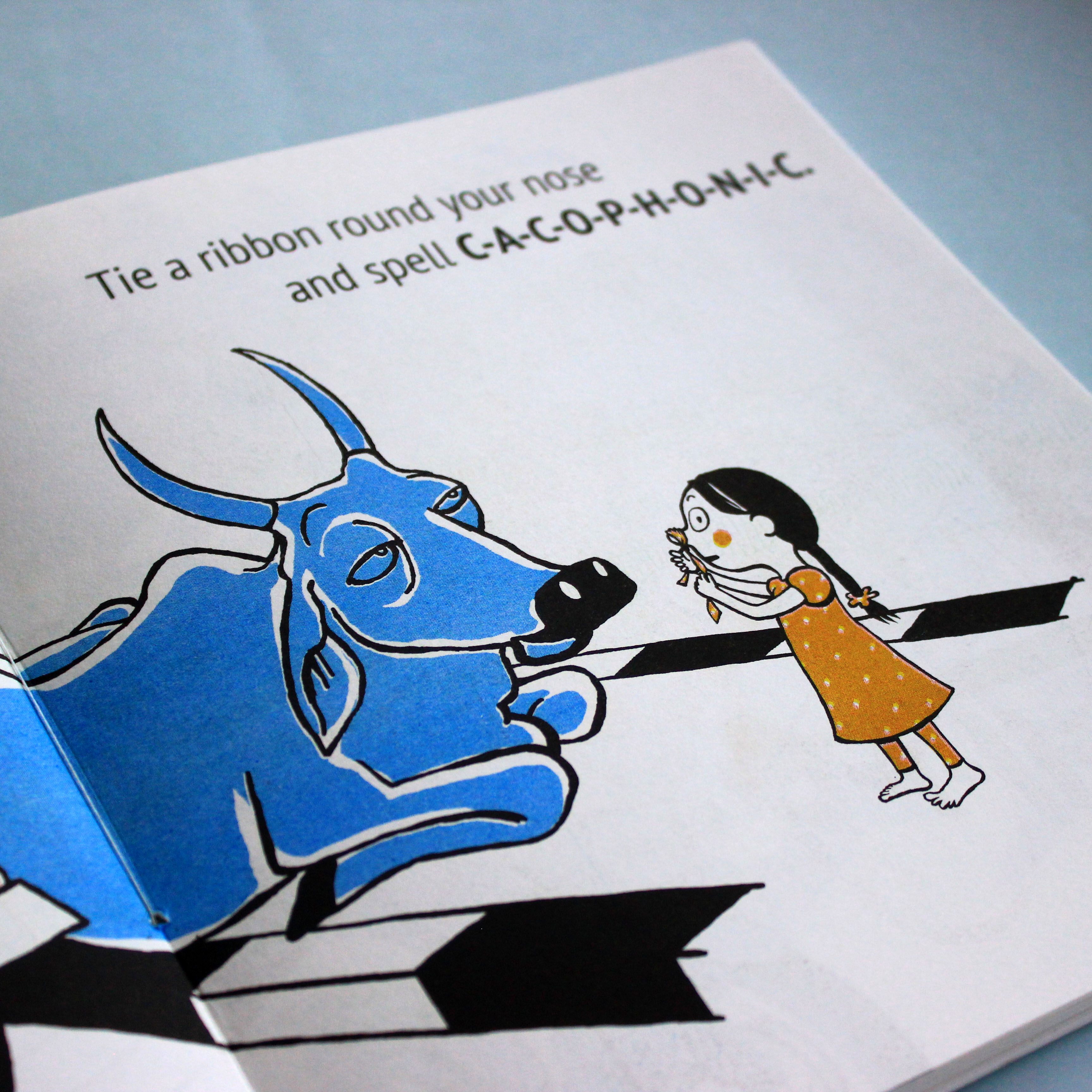This ‘Indian Dr. Seuss’ Is Very Fond of Nonsense
Her name is Anushka Ravishankar and she specializes in silliness.

Contrary to what one might like to believe, Anushka Ravishankar does not dream up words such as “Hayakilikileee” in her sleep. Despite having written about baby buffaloes blowing big blue bubbles, math teachers who turn into multiplication signs, and even a Fivetongued Firefanged Folkadotted Dragon Snake, Ravishankar’s dreams are admittedly prosaic. “I dream about the things I forget to do,” she says. “If I’ve forgotten to write an email to somebody, they pursue me in my dreams.”
At the May launch of Ravishankar’s new book in the South Indian city of Chennai, the author enlists the help of a young woman to demonstrate the efficacy of remedies for hiccups that are listed in her book of nonsense verse, Hic!. It is a romp through remedies that range from the renowned to the ridiculous. One vile cure—that of pouring mustard in the nostril—has the children restless with curiosity to see if it really works. Ravishankar’s resounding “Hic!” throws them into a collective chortle.

Twenty years ago, while working with Tara Books, an independent publishing house of international acclaim, based in Chennai, Ravishankar had the opportunity to write her first book to accompany artwork by children’s’ book illustrator, Pulak Biswas. “For Tiger on a Tree, we needed text which had to be at a tangent to the pictures, so that it didn’t repeat what the pictures said,” Ravishankar says. “It had to have a life of its own.” The book, written in nonsense verse, was translated into eight international languages, and sold over 50,000 copies worldwide.
With over 25 children’s books to her credit since, ranging from verse to fiction to non-fiction, Ravishankar is regarded as India’s Dr. Seuss. Her books, written in English, have been translated to languages such as Dutch, German, Italian, Spanish, Japanese and Korean.
Ravishankar is best known for her work in the genre of literary nonsense. Following in the tradition of Edward Lear and Lewis Carroll, Ravishankar writes nonsense verse in English that veers towards semantic nonsense of the Carrollian kind.

Around 2006, Ravishankar discovered India’s own legacy of literary nonsense in the form of a book project that attempted to study the nonsense traditions of India. As a member of an online group devoted to the late Edward Lear, an English artist, musician, and writer of literary nonsense, Ravishankar encountered Michael Heyman, an American who was putting together a book called The Tenth Rasa: An Anthology of Indian Nonsense.
“Once we began to correspond, I offered help on the nonsense from the southern states,” says Ravishankar. “Until I started working with this project, I didn’t realize that there was so much nonsense in Indian languages.”
The Tenth Rasa, considered by some as the first non-Western anthology of nonsense in translation in the world, was co-edited by Heyman, Sumanyu Satpathy and Ravishankar. It is a compilation of contemporary nonsense, mainly for adults, in English, as well as translations of nonsense written by some of India’s most nimble wordsters. These range from the 15th-century illiterate poet Kabir and his “ulatbamsi,” or “upside down language” (Hindi), to the 16th-century jester poet, Tenali Ramalinga’s verse that uses only the words for “goat” and “tail” (Telugu), to later writers of nonsense in Indian languages like Sukumar Ray (Bengali), Mangesh Padgavkar (Marathi) and Kunjunni (Malayalam) to contemporary nonsense prose and verse in English by writers such as Sampurna Chattarjee, Shreekumar Varma, and Ravishankar herself. The book also brings the rich language tradition of India to the fore through its nursery and folk rhymes that Indians have grown up reciting, but didn’t realize belonged to the nonsense genre.

“Mangesh Padgavkar, who writes in the Marathi language, was very aware of the idea of nonsense and even coined his own term for it—Vaatratika,” says Ravishankar. “But he was also aware that a lot of the time, when one tries to write nonsense, one ends up writing satire or humor.”
“The problem is, if you write nonsense, there is a good chance that you will be taken seriously. It happened with The Hunting of the Snark. People wrote to Lewis Carroll explaining to him what the deep profound meaning of the poem was. And actually he wrote it as just nonsense.”

When the time came for Ravishankar to write the introduction to the book, along with her two co-editors, she chose to write it, not in a theoretical sense, but in the spirit of the genre it attempted to celebrate. Ravishankar says, “Reviewers read it and actually reviewed it in all seriousness. It was like the emperor’s new clothes.”
Back at the book launch, the children come up with their own ridiculous remedies for hiccups. So far, they seem unperturbed by the lack of any definitive solution to the hiccups that besiege the little be-braided protagonist in Ravishankar’s book. It is a clever subversion of the quest for sense.










Follow us on Twitter to get the latest on the world's hidden wonders.
Like us on Facebook to get the latest on the world's hidden wonders.
Follow us on Twitter Like us on Facebook